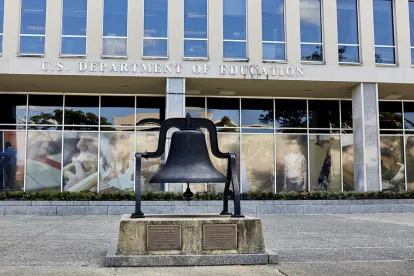An interpretive “Questions and Answers” directive (Q&A) related to amendments made to Title IX regulations in 2020 has been published by the Office for Civil Rights (OCR) of the U.S. Department of Education. This informational resource offers additional clarification to institutions concerning the appropriate application of the recent amendments to Title IX regulations.
According to the document, its purpose is to “describe OCR’s interpretation of schools’ responsibilities under Title IX, and the Department’s current implementing regulations related to sexual harassment, as enforced by OCR.” The document goes on to note that the guidance is being offered even while a separate, comprehensive review of Title IX regulations is underway.
The Q&A offers direction on a range of issues that have been the focus of questions following the implementation of new regulations in 2020. These broad topics include directions concerning: how “sexual harassment” is defined and the scope of institutional responsibility; the requirements imposed upon institutions when a complaint is initiated; expectations related to investigatory time frames; hearing process requirements; and the use of informal resolution processes.
Among the key interpretive provisions contained in the Q&A are these:
-
Additional clarity is provided related to the definition of “sexual harassment” contained in the 2020 amendments, with further reference to definitions contained in the Clery Act and the Violence Against Women Act. (pp. 5-6)
-
Affirmation that an institution may respond to instances of alleged sexual misconduct that do not meet the definition contained in the 2020 amendments is offered, noting that schools have “discretion to respond appropriately to reports of sexual misconduct” beyond the scope of the definition. (p. 6)
-
The Q&A affirms the inclusion of “remote learning platforms;” off-campus settings where the institution exercises “substantial control” over the situation and participants; or off-campus premises controlled by a student organization. (p. 8)
-
The ability of an institution to exercise discretion in determining which of its employees are designated as “mandatory reporters” of harassment versus those that may keep such information confidential is affirmed by the Q&A. (pp. 12-13)
-
The affirmative expectation that Title IX coordinators initiate complaints in certain instances, even when an alleged perpetrator is not a member of the campus community, is underscored. (p. 15)
-
While noting that the Department had previously identified 60-days as an appropriate period to resolve sexual harassment complaints, the Q&A underscores that a “reasonably prompt” process is demanded, but in applying that requirement, each institution is in the best position to “balance promptness with fairness and accuracy.” (p. 20)
-
The significant latitude possessed by institutions in establishing hearing rules and requirements is affirmed, so long as such rules are applied “equally” to parties. (pp. 22-23)
The Q&A provides institutions with an additional tool in interpreting the 2020 amendments to Title IX regulations. However, many remaining complexities are underscored in the document




 />i
/>i

